Jake Weimer
Jimmy Lewis
Travis Preston
It is well known that being on the factory Honda race team is the pinnacle of the sport of motocross. So much so that young racers dream of it, support riders strive for a position and when champions arrive, they are expected to win, for they are perceived to have every advantage. When champions leave, beating Honda is usually one of their top priorities. So what is it like to be a member of Team Honda? If we could tell you, we would. By begging and pleading, we got factory-rider treatment for one day with Team Honda, obtaining an invite to an SX test session and a behind-the-scenes peek at one of the most secretive operations in motocross. We even got to ride a race bike!Our experience wasn't the glamorous side of being one of the few talented enough to make the cut at Team Honda-the kind of rider who sees a crowd line up to get our autograph, who is cheered from the stands as we dazzle them with our stellar riding ability on the unobtanium machine, knowing we're compensated with a big-bucks contract. No, this was a more typical day, most particularly for Andrew Short, who was out to practice, train and test some parts on his machine. Testing and practicing are a huge component of the game, a piece of doing what it takes to get on top and stay there. And this is one of the recognized strong points of Honda-going the distance to give its riders everything they need to win. There are very few doubters of Honda's race bikes."Within reason, they can have anything they want," says Dan Betley, the team's motocross research and development manager. "Our job is to continually test and develop better stuff and offer it to them to race with, as well as set up the bikes exactly as each rider wants." From what I can tell after riding a lot of factory bikes, that is the biggest advantage a factory rider gets-the attention in testing and developing settings that make his bike the best it can be. The bike is made for him and him alone.For Honda, it takes a fleet of full-time guys, from truck drivers to in-house development guys to suspension techs to the factory mechanics. Even Jeremy McGrath is a big part of the team, and apart from his extremely successful part-time racing gig, he is mainly a test rider for development of the race team's 450."The sport is so specialized that it isn't like back in the day when mechanics were cutting frames and laying down shocks. Now we have a technician for everything, with the mechanic just responsible for building the bikes and keeping them tuned to the rider." Betley knows this because he's been through the game, wrenching for Jeff Stanton during his championship years.Dirt Rider was one of the first outsiders to have been allowed to ride a race bike during the season (it was actually the 250F test bike for Davi Millsaps and Andrew Short) and make some changes to it to have a taste, even as small as it was, of the secrets of the Red Riders. From lever position and shock clicker setting to getting the opportunity to ride a second engine with a different setting, Matt Armstrong and I were "in." To top it off, Short's mechanic, Chris Loschiavo, was very attentively watching over us as if we were his riders (wouldn't you if your bike was in the hands of amateurs?). We were getting star treatment, which meant being bombarded with questions such as, "What did you think of that?" and "How did this work?" McGrath was there to pick up a test bike and even dished out a few pointers to me, as he does for the team riders in his role as test rider and rider coach. "Just leave it in third," he told me. Why do a lot of top riders always tell me that? "I've never seen that done before," jokingly referring to my riding in places on the track that had been touched only by tractor cleats previously, never motorcycle tires. And it was late in the afternoon and beginning to get dark when the action really became intense. That's because the Honda test track in the foothills of Corona, California, has stadium lighting, set up so riders could better acclimate themselves to ride under lights, and the team is able to test in conditions more similar to a true race scenario. The air density is different, there is moisture coming out of the ground, things change when night sets in. Travis Preston was there testing some clutch stuff on his 450. Later Jake Weimer and Tommy Hahn showed up to do laps on their Sobe/Samsung/Honda bikes.Riding the Championship Bike
I've heard it from everyone. From the beer-in-hand fan sitting next to me in the stands at a supercross event or an outdoor national to the struggling oh-so-close-to-a-real-ride privateer: "If I had that bike, I'd..."Well, if you had that bike, you'd better, or you won't be on it for long. The steep slope off of a factory race bike and team is as breathtaking as learning to ride one of these super-stiff, fire-breathing monsters. Take it from me, you and the rest of us 99-percenters are better off on a stocker. But it never hurts to dream.Every time I ride a real factory race bike, I'm dreaming, dreaming that I can actually ride it like I'm supposed to. Since the bike we were riding was Short's, it had his setup as a starting point. He runs it pretty standard with a normal-bend Renthal bar and a standard footpeg position. The seat is standard height and the foam is stock as well, just replaced often. About the only abnormal thing is the clutch lever, which seems to have the bend of a 1979 XL500, just machined out of billet! And attached to a very trick bike! Titanium, anodized billet and a lot of secret stuff grace the CRF. Just getting near the bike, you can smell the high-dollar race gas. Once running it has a higher idle and slightly cammier rumble to it. The jetting was changed before we even climbed on the bike as Loschiavo looked over his detailed notes on the bike. He adjusted the jetting for the current temperature and pressure conditions of the air just by feel. These guys work like a machine.From the first bump I hit (it isn't absorbed much) to the first twist in the throttle, I could tell this wasn't just your ordinary modded motor. The whole bike was really impressive, especially on a supercross track. Way too much. The engine had more torque right off idle, like a big-bore kit in grunt but still light, feathery and responsive. It was pretty smooth for the first part of the spread-in a zone where pro riders most likely never ride it, except for the parade lap. Then it built and built quick. It was smooth, but so amplified in power and pull that it was downright gnarly. It revved way up and most likely puts out plenty of juice on the very top as well, but the midrange was so impressive that I didn't feel the need (or dare) to get up there, other than on the start straight. I couldn't get the bike up to the top-end on the rest of the track: It was fast, really strong and only approximately 2 percent better than anything the layperson can buy or have built. But it is that 2 percent that no one else can get, regardless of whether you can use it or not.Since I was riding around on a real supercross test track, I was doomed by skill to double just about everything. With this track built in series of six jumps, it was better than the older-style tracks, where even the doubles were tricky. The problem was the bike's power wanted to jump three things, not two. Now if I'd just held it on, I might have been able to do it. But I wasn't about to find out if I had the talent to back up what the bike could handle.So that leads to the suspension. Stiff is a negative word, but it has to be taken in context. The bike's suspension likes to move slowly so it doesn't wallow around or compress too much on jump faces or in the whoops. It is also very slow in rebound and it won't spring the bike up higher in the air or throw the front wheel down in the whoops. As a rider gets faster, his suspension usually gets stiffer because he hits things harder. Short's suspension is way stiffer than last year, and that should tell you something. I ended up opening the rebound so the suspension would give me lift off the jumps to help clear things, 'cause I wasn't using speed to do it alone. Plus, on step-offs, I needed additional spring to hop me over the next bump 'cause, again, I wasn't going fast enough. Even Short's trick little steering stabilizer, hidden behind the front numberplate was set too stiff for me, and I'm used to those things. We loosened it, and I was happy.We got to blast or smash around the track till we were sore and even rode under the lights. And just to prove my point about it being the rider and not the bike, I lined up for a few practice starts with Hahn, Weimer and even 450-mounted Preston. After about five times, I had my launch dialed. No matter what I did within 10 feet, I got yanked about a half a bike length. So much for having the best bike!Honda has had a pretty good run of championships over the years, and the company definitely wants to have more. By constantly trying to improve everything around it in racing, it has made a commitment that is expensive and time-consuming, and often the benefits are not immediately tangible in dollars. It helps the brand image, it creates a perception and sometimes this racing commitment trickles down to production stuff you and I can buy. There is a reason riders dream of being on Team Honda. Because it is what it is.

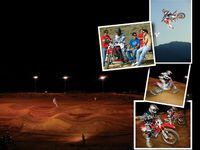
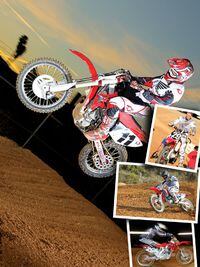
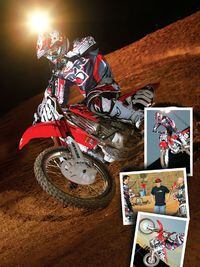
/cloudfront-us-east-1.images.arcpublishing.com/octane/6ONR4CR3FBB5PDN5SQPFB36CSI.jpg)
/cloudfront-us-east-1.images.arcpublishing.com/octane/3GF26TF5YVFIJCHZJMYTMWIPPY.jpg)
/cloudfront-us-east-1.images.arcpublishing.com/octane/QSWIPGJUFNAENBSGFG5ASKGUCY.jpg)
/cloudfront-us-east-1.images.arcpublishing.com/octane/JEB56YXHFZDYRBTQRSUPSIQT4E.jpg)
/cloudfront-us-east-1.images.arcpublishing.com/octane/2U42JYK7ZVCK5FISIIFYDLMFQY.jpg)
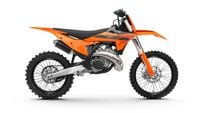
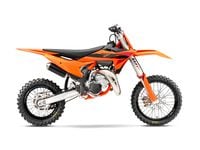
/cloudfront-us-east-1.images.arcpublishing.com/octane/2F2YWJRM4ZDCBEBIHI6HAZXI5U.jpg)
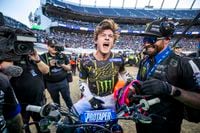
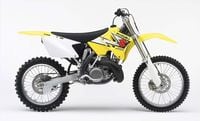
/cloudfront-us-east-1.images.arcpublishing.com/octane/I37LN27L3ZHRHO6DZRHHBLBCZQ.jpg)
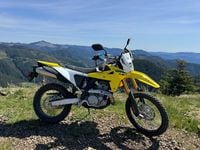
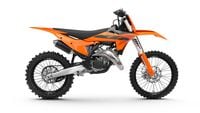
/cloudfront-us-east-1.images.arcpublishing.com/octane/77ZEF3VNXZFIHI5IUF6ZBEHEJE.jpg)

/cloudfront-us-east-1.images.arcpublishing.com/octane/M5OFLO75LRBXXPXDVFIRIAKJWM.jpg)

/cloudfront-us-east-1.images.arcpublishing.com/octane/XFANREREUJHCTOV5UB2BJIQDOU.jpg)
/cloudfront-us-east-1.images.arcpublishing.com/octane/JDD3UJJOYNDKZH7G3REK676I3Y.jpg)
/cloudfront-us-east-1.images.arcpublishing.com/octane/WX7RDB74WNG4LEJX357DVYVDIU.jpg)
/cloudfront-us-east-1.images.arcpublishing.com/octane/MYU2ARUAFFGDTAPV6NOPY54CFY.jpg)
/cloudfront-us-east-1.images.arcpublishing.com/octane/7OY2GP3FWFEDVEMDSLNGM6PZRM.jpg)
/cloudfront-us-east-1.images.arcpublishing.com/octane/VDOEVSAFZRCVHEE4XZUNE3M5AE.jpg)